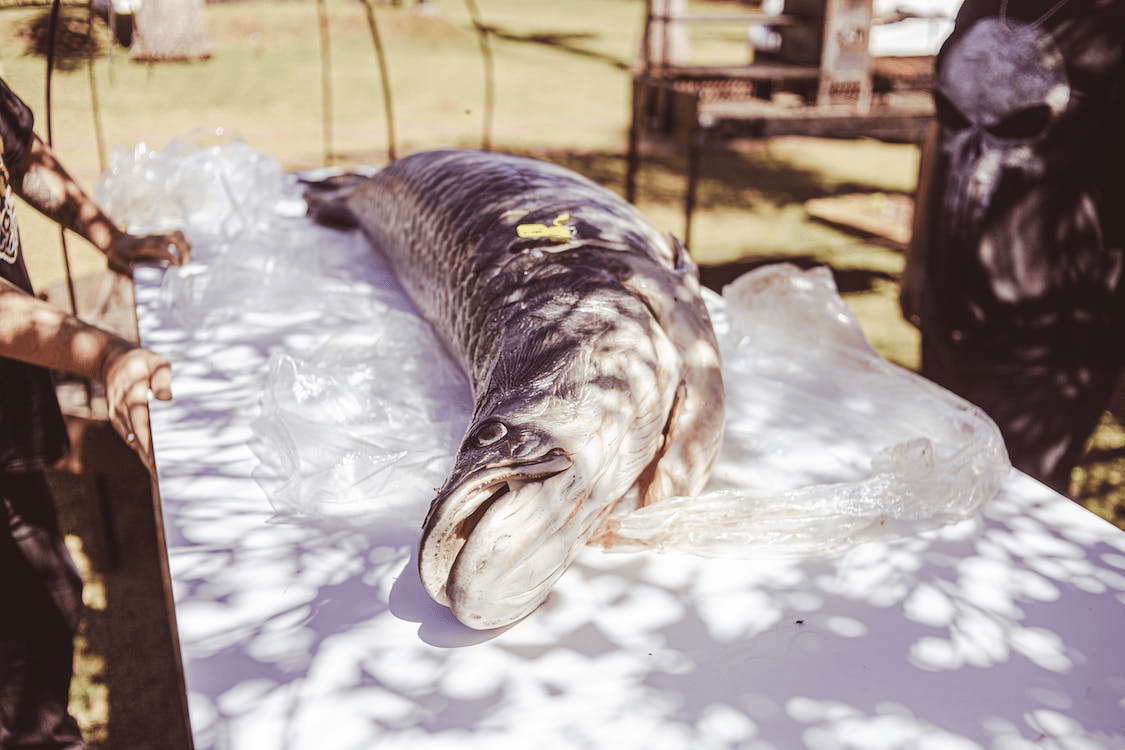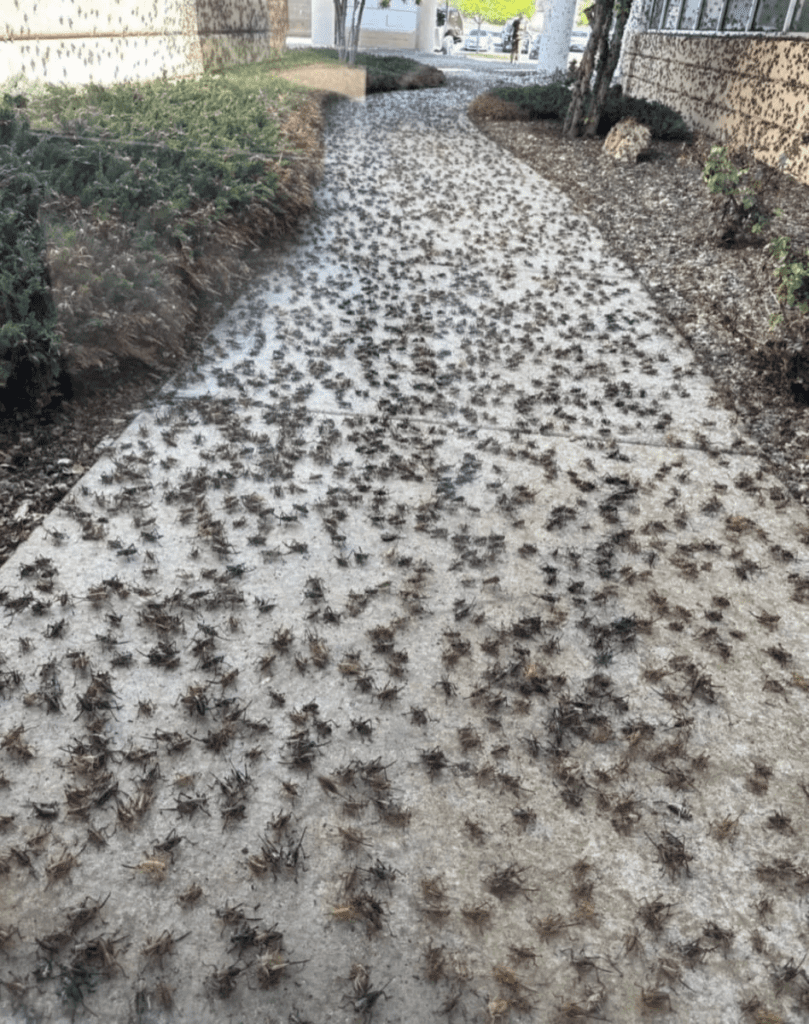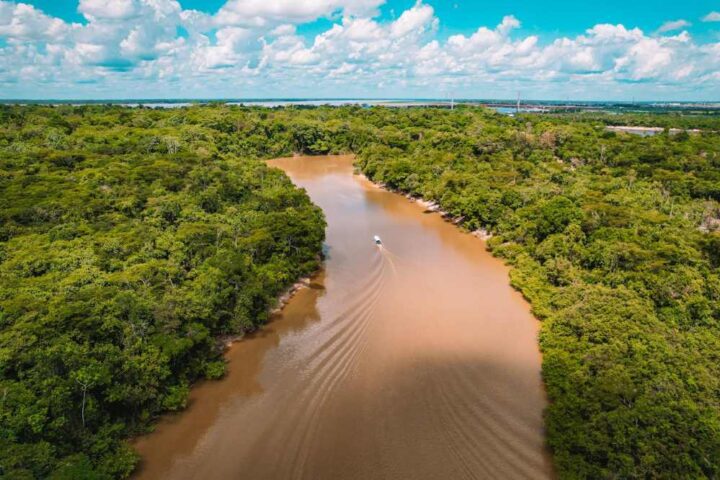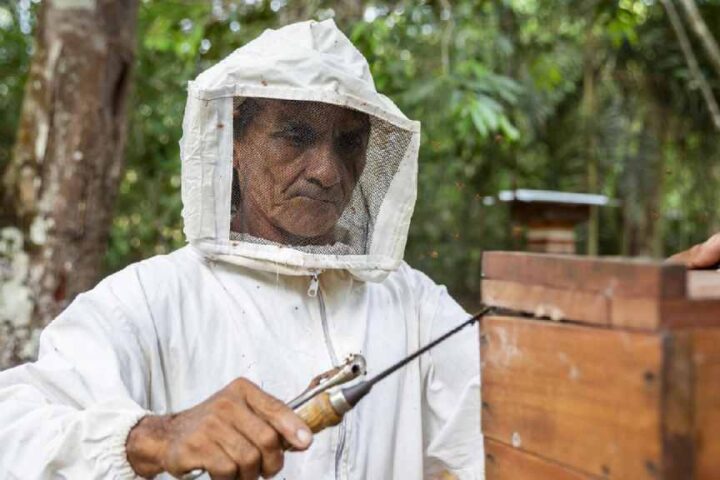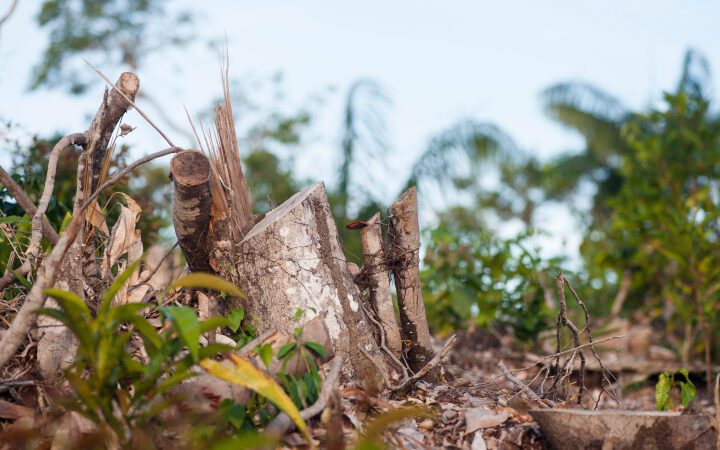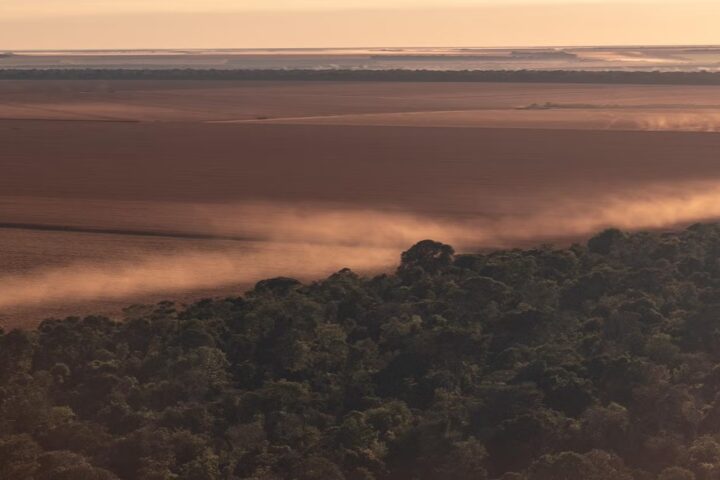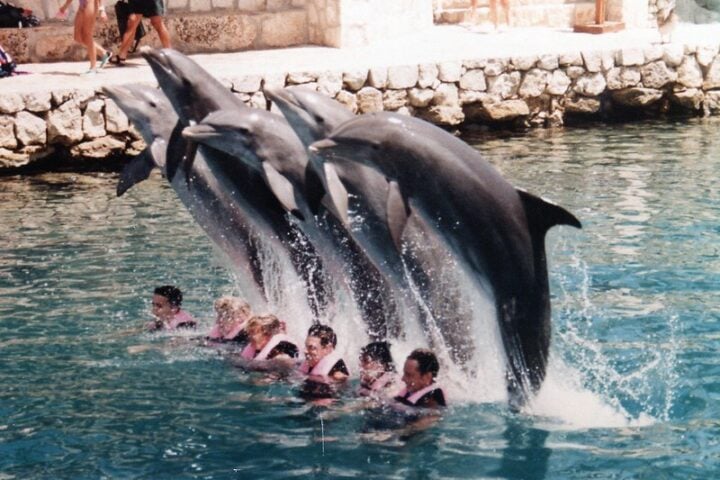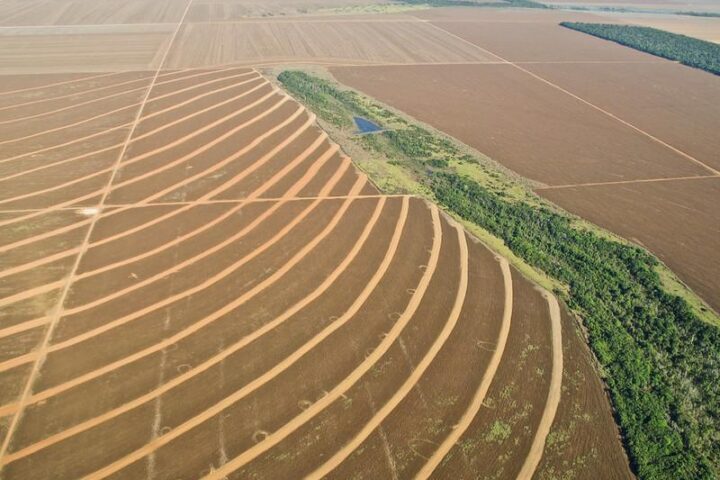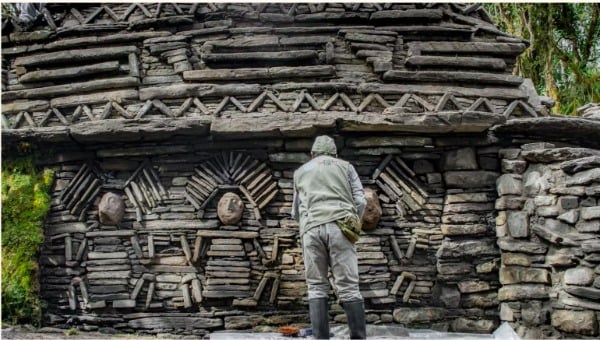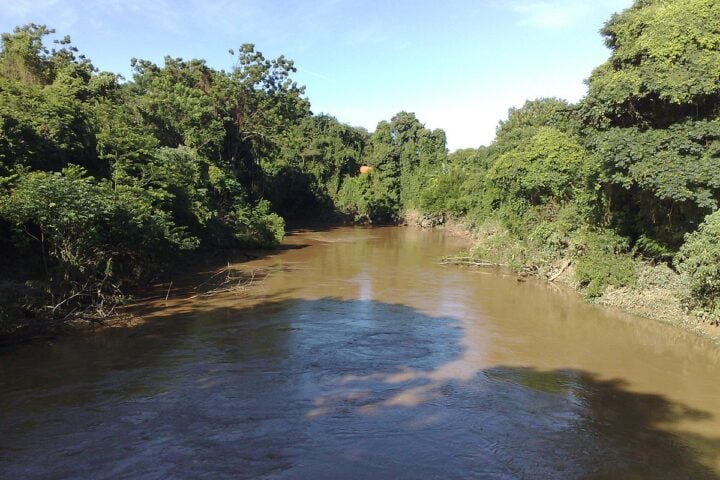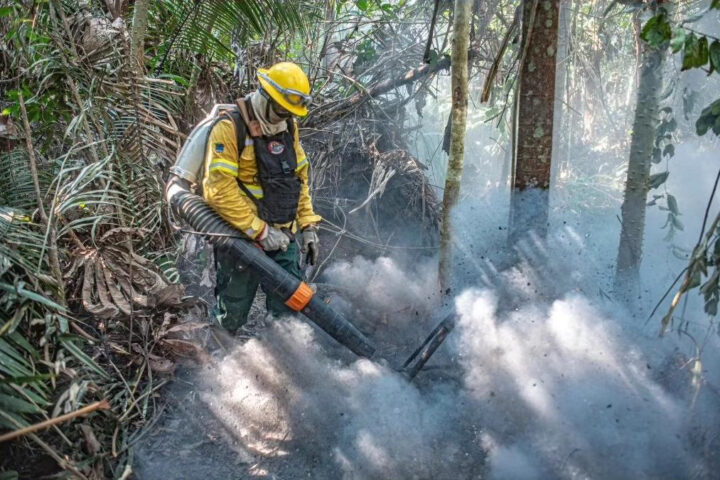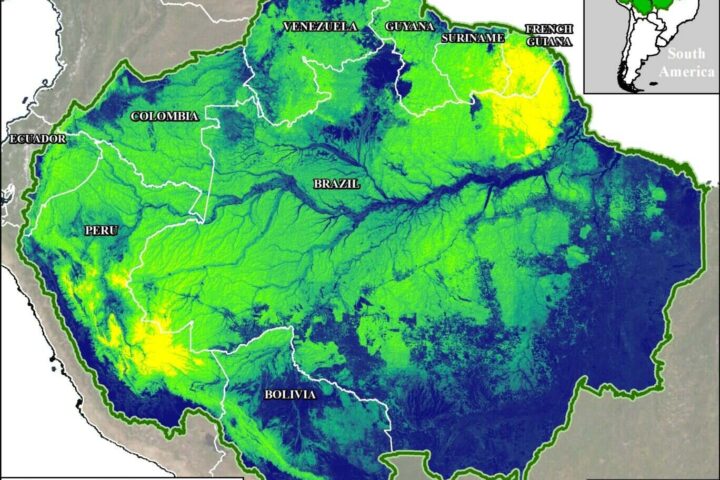The freshwater pirarucu is a large fish found in a lawless part of the Amazon jungle where Brazil, Peru, and Colombia meet, particularly in the Javari Valley. It is highly valued for its taste and beauty, making it a favorite target for poachers. The pirarucu has been a staple food for Indigenous people living in the Javari Valley, who hunt the air-breathing fish in the lakes of the region.
The increasing demand for pirarucu has led to its inclusion on the menus of gastronomic and fusion restaurants in cities like Rio de Janeiro, Bogota, and Lima. This rising popularity has driven up prices and intensified the competition among Amazon dwellers for the fish. The pirarucu’s skin is highly prized, in addition to its flesh, and is used to produce exotic leather products such as shoes, bags, and wallets. Its scales, known for being resistant to piranha teeth, are also sold as key chains to tourists.
The pirarucu, scientifically known as Arapaima gigas, is one of the largest freshwater fish in the world and is an omnivorous species. It has a very peculiar appearance. A tapered pink tail, an awkwardly flattened head, and globular eyes that resemble those of a prehistoric monster. It can grow up to three meters (9.8 feet) in length and weigh over 200 kilograms (440 pounds). Due to its need to surface every 20 minutes to breathe, the giant fish is relatively easy to spot and hunt.
Similar Post
In Brazil’s Amazonas province, the harvesting of pirarucu is strictly regulated. In the Javari Valley, which is home to seven tribes, including the Kanamari, only residents are allowed to hunt the fish. However, conflicts between the Kanamari tribe and intruders seeking the prized fish are not uncommon. The Kanamari consider the pirarucu as “a tree leaf that fell into the water and became a giant fish,” according to tribal chief Mauro da Silva Kanamari.
The pirarucu population faced significant decline in the 1990s due to overfishing. However, fishing restrictions implemented by the Brazilian government helped in its recovery. In 2017, a project was initiated in the Javari Valley with the assistance of an Indigenous NGO called CTI (Conservation International) to ensure the sustainable harvesting of pirarucu by the community. The Kanamari tribe manages the project, and they have voluntarily limited their catches and refrained from selling any pirarucu for five years. The objective is to enable the Indigenous people to meet their own needs while protecting their territory.
The project also involves patrols to identify and report poachers, which can be a dangerous task as it puts the tribespeople in direct contact with armed illegal fishermen. A stocktake will be conducted in the coming weeks to assess the recovery of the pirarucu population. If the fish numbers have sufficiently rebounded, the Kanamari will be able to resume selling the fish. However, there are challenges ahead, including the establishment of a cold chain to transport the fish safely from the remote jungle to clients, as well as deciding how to distribute the proceeds.
Some individuals express concerns that the opening of sales could expose the Indigenous jungle dwellers to new risks, such as the involvement of local politicians or businessmen with potentially illegal fishing networks. Despite the challenges, the project is seen as vital by the Kanamari and other Indigenous people in the Javari Valley to ensure a sustainable future and the preservation of their lakes and fishing areas.
